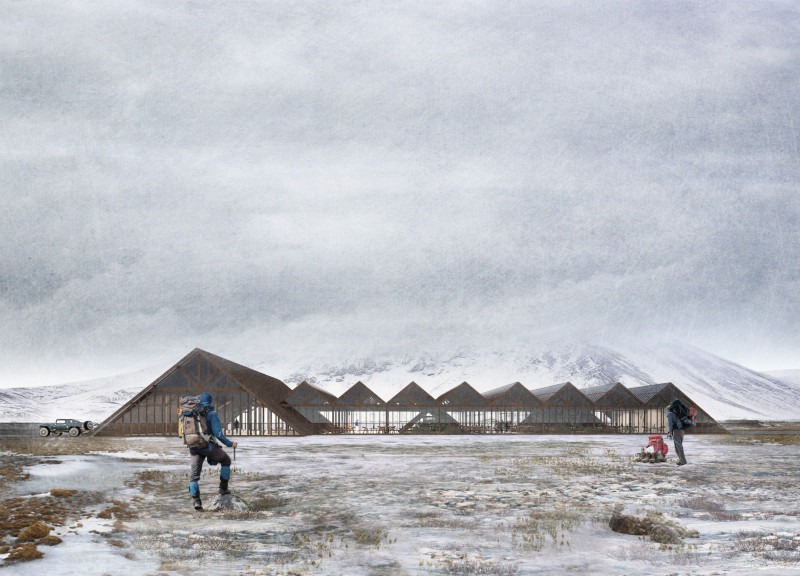5 key facts about this project
The design is situated near the Hverfjall volcano and focuses on connecting with the natural surroundings while serving various community needs. It is intended for multiple functions, including meetings, social events, and dining. The overall concept emphasizes openness and flexibility, promoting interaction among users and creating a welcoming environment despite the harsh climate conditions.
Function and Spatial Design
The layout is organized around a central multipurpose area, with dedicated spaces for an open kitchen and dining area. This arrangement encourages community engagement and allows for easy transitions between different activities. The design accommodates a range of functions, making it suitable for various events and gatherings.
Materials Employed
The primary materials used in the construction are wood and sealed concrete. Wood forms the structural framework, providing both strength and a warm appearance. Sealed concrete serves as the flooring, ensuring durability and effective heat retention. This combination helps the building perform well in the local climate, creating a comfortable indoor space.
Greenhouse Integration
An important feature is the greenhouse attached to the dining area. This space is designed for growing vegetables and fruits, enhancing sustainability by providing fresh produce for meals. With a glass roof, the greenhouse promotes natural light and offers a visual connection to the outside, bringing a sense of nature into the interior.
Transparency and Interaction
The design features large glass panels on the front and back facades, allowing for unobstructed views of the Hverfjall volcano. This openness creates a connection between the building's interior and the landscape, encouraging visitors to engage with their surroundings. Furthermore, the modularity of the design supports future changes, allowing the space to adapt as community needs evolve.
Wide expanses of glass create an inviting atmosphere, encouraging users to enjoy the views while also bringing natural light deep into the interior.






















































